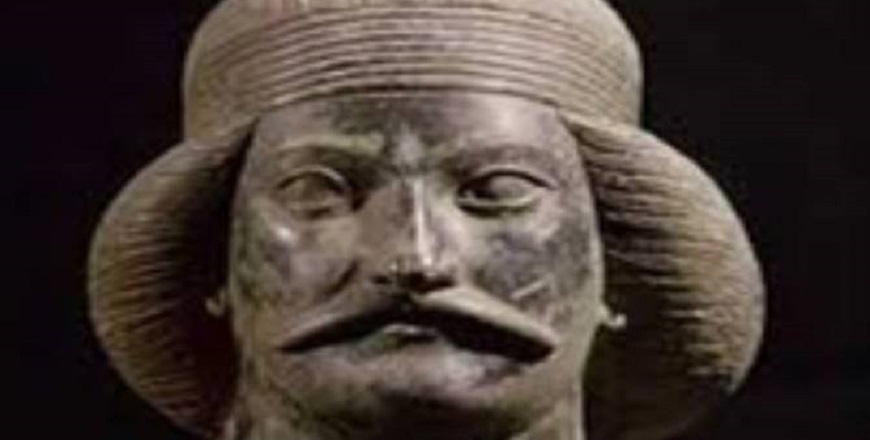

After the burning of Persepolis, Alexander of Macedon came to the conclusion that Hellenism and Iranianism were not necessarily irreconcilable enemies; but perhaps he was also surprised at finding in the Persians a discipline, a desire to be loyal to the sovereign, a veneration of the royal person which flattered him as inheritor of the Achaemenid dynasty. He tried in consequence to make himself agreeable to the Iranians, for political reasons, to be sure, but also out of sympathy. He introduced Persian recruits into his Macedonian regiments, entrusted the administration of the provinces he had just conquered to Iranian governors, married the daughter of a Bactrian noble and encouraged his officers to do likewise.
Yet Persia was hereditary enemy of the Greeks! Such an attitude emphasizes two striking aspects of the conqueror’s thought: his great desire for concord and unity, his weariness with agitation characteristic of Greece and the esteem in which he held the Persians.
Iranian legend also adopted Alexander. The great Iranian epic, “Shah-Nameh” by Ferdowsi, transformed history as follows: a king of Persia, “Darab”, sought and obtained the hand of the daughter of Philip of Macedon in marriage. The Achaemenid sovereign, dissatisfied with his wife, sent her back to her father, who was justly infuriated by this insult. On her return to Greece, the forsaken princess gave birth to a son, Alexander. Philip, according to the Iranian legend, wishing to conceal the humiliation inflicted on his daughter, announced the birth of the child as being that of his own son, so that, according to this tale, Alexander, in defeating “Dara”, son of “Darab”, his step-brother, had only reconquered his heritage.
The Seleucids, heirs of the Conqueror, considered themselves in their turn as the successors of the Achaemenids. They tried maintain the established order and to assert their authority over the Iranian satrapies. However Seleucus I, the founder of the dynasty, had to abandon the eastern satrapies and hand them over to the King of India, Chandragupta, in return for a gift of 500 elephants, the very ones which contributed so felicitously to the victory he won over Antigonus at Ipsus.
Seleucus had married an Iranian at the time of the famous marriage festival at Susa and Antiochus I, his successor, was born of this union. But contrary to the intentions to which this alliance seemed to bear witness, the Seleucid monarchs persisted in considering themselves as Greek in the midst of Iranians. They imposed their language and used it in government. There was certainly no cultural aim behind this: only the will to assert Greek military and administrative authority on the Iranian world, which the Seleucids thought, ought to be well governed, but governed by Greeks. However, Hellenism had felt the influence and even the attraction of the Orient through the intermediary of Asia Minor. Archaic Greeek art used many oriental formulae and motifs. Plato, whom the Islamic thinkers in their turn adopted, claimed in the “Timaeus” to have come under the influence of the Persian Magi.
The Seleucids, conscious of their weakness of their establishment in Iran, tried hard to create a kind of defense network consisting of military posts which at first were placed along the main routes built by the Achaemenids and maintained by the Seleucids as a permanent system of postal communications. Sometimes colonies of retired Greeks to whom the Seleucid sovereigns had granted large or small landed properties were grouped around the military installations. These groups developed and some of them even reached the rank of “polis”, i.e. town, but obtaining this dignity and its accompanying advantages required that each new community give proof of a certain level of organization: that it could construct a stadium, a gymnasium, baths, that it had governing body elected by the people and magistrates chosen by the governing body. The Greeks who settled in Iran seem to have been very satisfied with this regime and deeply attached to the defied King, supreme head of the state. Some of these towns were named after sovereigns.
From the little that archaeology of the Hellenistic period teaches us, it seems clear that there was a number of Greek cities in Iran. It is probable that one of them was at Fasa, in Fars, where numerous fragments of Hellenistic sculptures and ceramics have been dug up. Another may have occupied the hill at Kangavar, between Kermanshah and Hamedan, where the remains of a Parthian temple dedicated to Artemis-Anahit, according to Isdore of Charax, may still be seen. Yet another must have been around or near two solitary Seleucid columns close to a village called Khura, not far from Delijan, on the road from Isfahan to Qom. A fourth definitely existed on the site of present-day Nahavand, not far from Malayer, and that it bore the name of ‘Laodicea in Media’ we know from a fine Greek inscription found there some years ago by which Antiochus III the Seleucid instituted the cult of his wife Laodicea ‘in the temple of this town’.